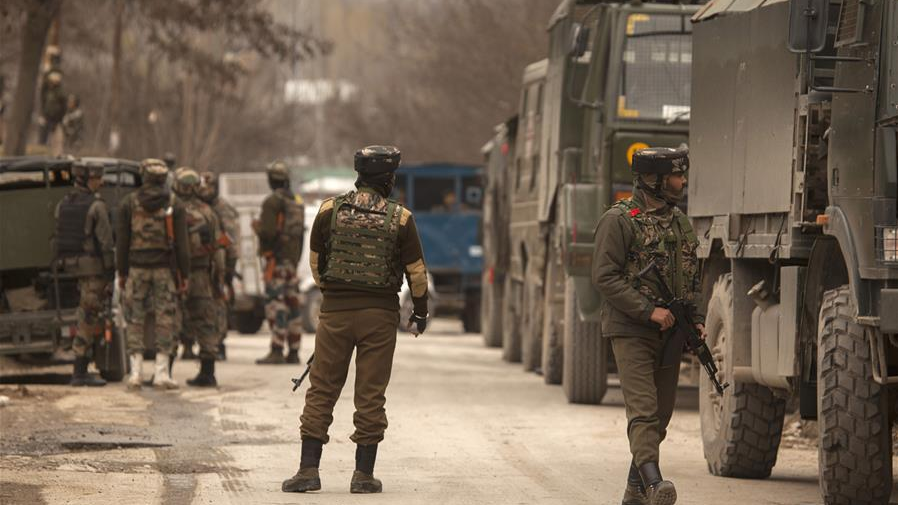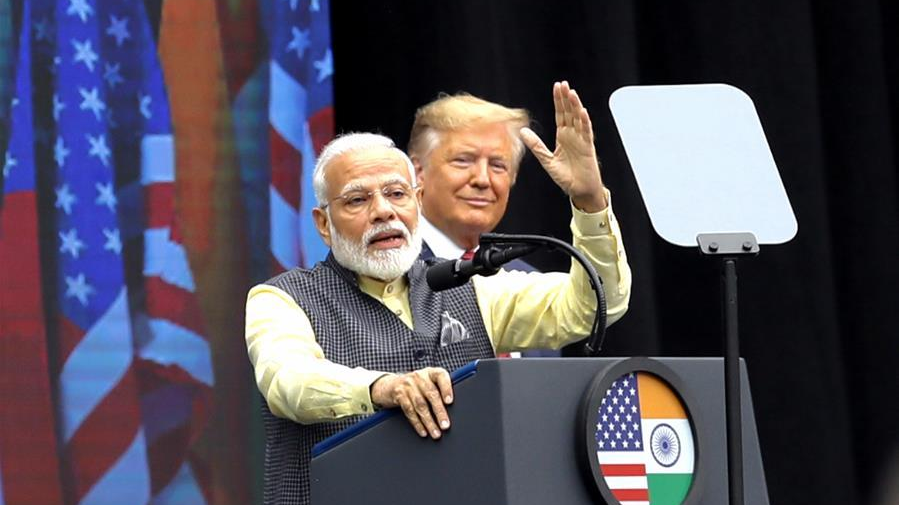
Indian army troopers arrive at site of a gunfight at Khonmoh village in the outskirts of Srinagar, the summer capital of Indian-controlled Kashmir, March 15, 2018. /Xinhua
Indian army troopers arrive at site of a gunfight at Khonmoh village in the outskirts of Srinagar, the summer capital of Indian-controlled Kashmir, March 15, 2018. /Xinhua
Editor's note: Andrew Korybko is a Moscow-based American political analyst. The article reflects the author's opinion, and not necessarily the views of CGTN.
Monday night, according to the Chinese side, after Indian troops provoked and attacked Chinese personnel upon illegally crossing the Line of Actual Control (LAC) in Aksai Chin, a fierce physical fight broke out between the two troops.
The two BRICS and SCO partners have been engaged in a tense weeks-long standoff following similar acts of Indian aggression in last month, but Beijing believed that it had reached a positive consensus on the situation with New Delhi following high-level military talks last week.
Regrettably, the Indian side still decided to resort to its strategy of regional aggression for inexplicable reasons, thereby recklessly endangering the peace between the world's two most populous countries.
The Hindu nationalist government led by Prime Minister Modi and his Bharatiya Janata Party (BJP) party has been engaged in many similar pursuits since coming to power in 2014.
It applied serious political pressure against Sri Lanka ahead of its elections in January 2015 and then imposed a de-facto blockade against Nepal later that same year.
The summer of 2017 eerily preceded the recent events in Aksai Chin after India initiated a similar border standoff with China over the Donglang Plateau near the intersection of their joint border with Bhutan that lasted for several months.
India then carried out what its leadership described as a "surgical strike" against neighboring Pakistan in early 2019, which prompted Islamabad to shoot down at least one of its planes that invaded its territory, bringing the two nuclear-armed countries to the brink of war.

Indian Prime Minister Narendra Modi addresses the "Howdy, Modi!" rally along with U.S. President Donald Trump, Houston, Texas, U.S., September 22, 2019. /Xinhua
Indian Prime Minister Narendra Modi addresses the "Howdy, Modi!" rally along with U.S. President Donald Trump, Houston, Texas, U.S., September 22, 2019. /Xinhua
Less than half a year later in early August, India revoked the autonomy that it had previously granted to the UNSC-recognized disputed region of Kashmir and split it into two separate parts in contravention of international law.
Almost immediately thereafter, Indian Minister of Home Affairs Amit Shah reaffirmed his country's claims to China's Aksai Chin, which set the basis for its recent provocations there.
A few months later in November 2019, it also released a map laying claim to disputed territory with Nepal. Therefore, no plausible doubt exists about India's pattern of regional aggression under Modi's BJP Hindu nationalist government.
Some observers believe that this strategy is motivated by some of the ruling party's desire to carve out what they call "Akhand Bharat" (Greater India) in order to impose a "Hindu Rashtra" (fundamentalist Hindu state).
It's for this reason, including India's treatment of its Muslim minority and especially those in contested Kashmir, that Pakistani Prime Minister Khan compared them to Nazis.
These destabilizing developments have occurred in parallel with India's unprecedented improvement of relations with the U.S., which are now officially regarded by the two countries as a "comprehensive global strategic partnership" following Trump's first-ever visit to the country as President in February.
In the years before that, India signed several military pacts with the U.S. such as the "Logistics Exchange Memorandum of Agreement" (LEMOA) and the "Communications Compatibility and Security Agreement" (COMCASA).
Those agreements improved interoperability between the two countries' militaries as part of their multilateral Quad framework alongside Australia and Japan, thus advancing the Pentagon's "Indo-Pacific" strategy as articulated in its report from last year of relying on India as one of its key partners in this vast space.
Many observers have warned that the U.S. wants to exploit India as a proxy for "containing" China, and regrettably, that scheme seems to be presently in effect considering India's latest aggression against the People's Republic.
India must urgently refrain from its strategy of regional aggression in order to safeguard peace and stability in Asia. Its leadership must resist the temptation of capitulating to influential far-right ideologues in the ruling party who are pushing it towards war with its neighbors.
Furthermore, India must do all that it can to ensure that it maintains independent control of its foreign and military policies instead of being exploited as any other country's proxy against China. The world is anxiously watching to see whether India does the right thing or not.
(If you want to contribute and have specific expertise, please contact us at opinions@cgtn.com.)